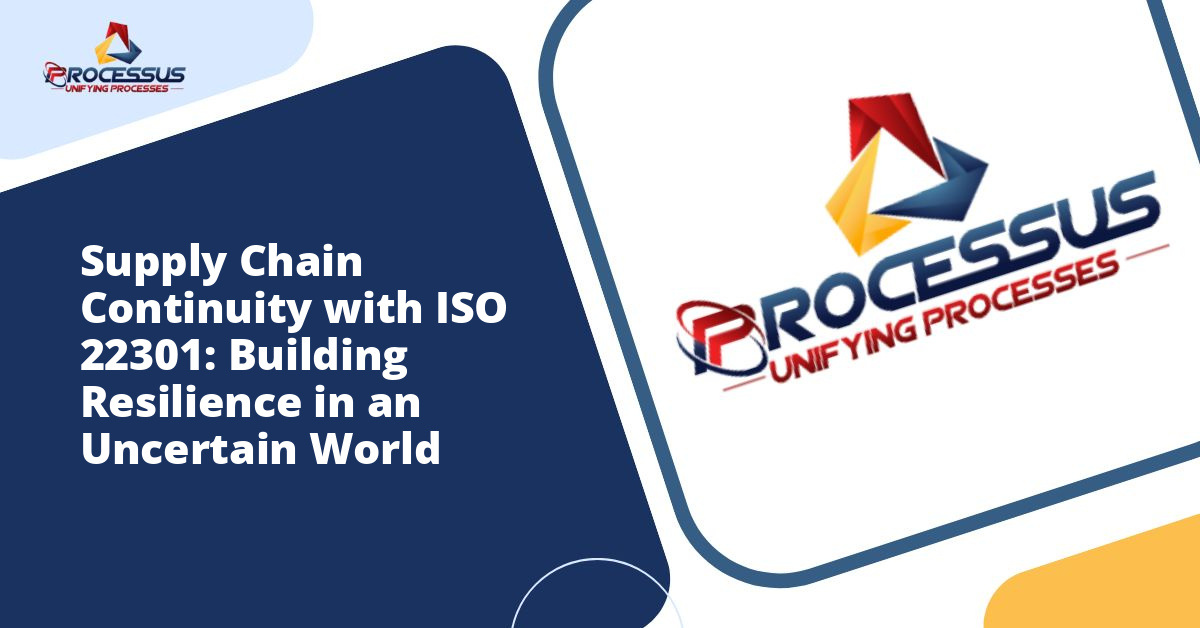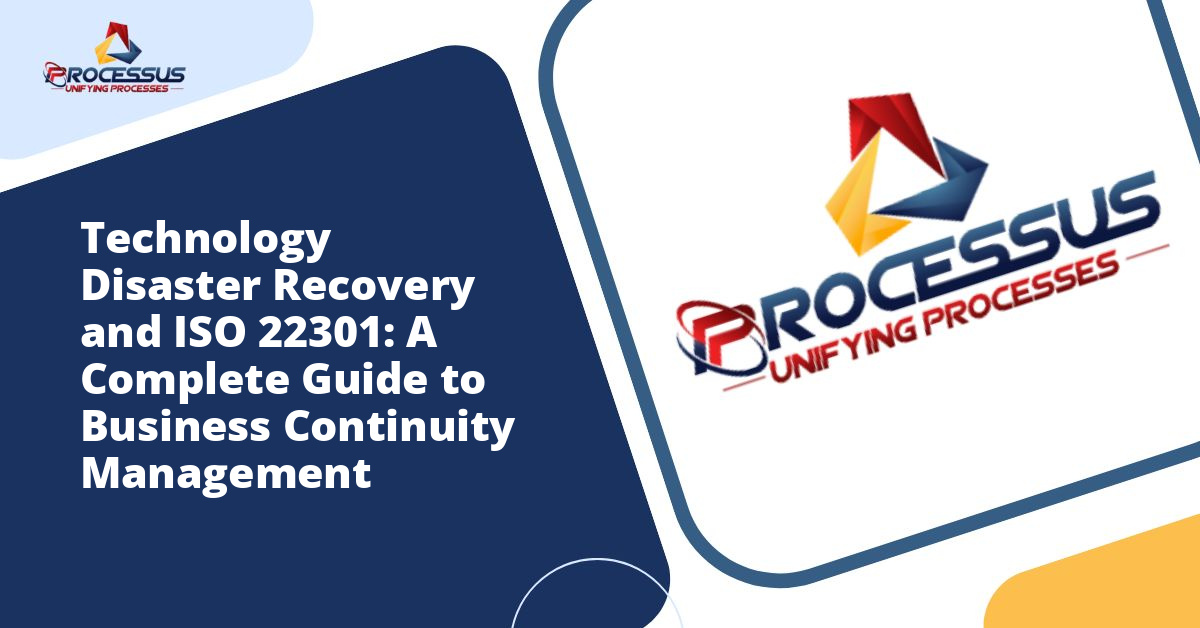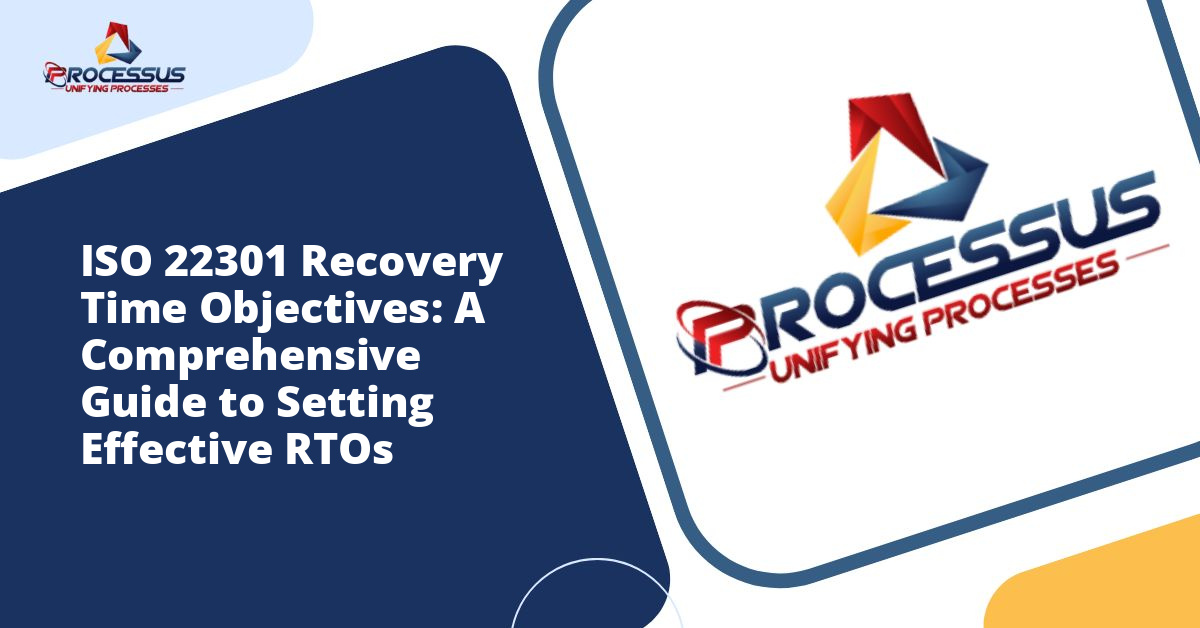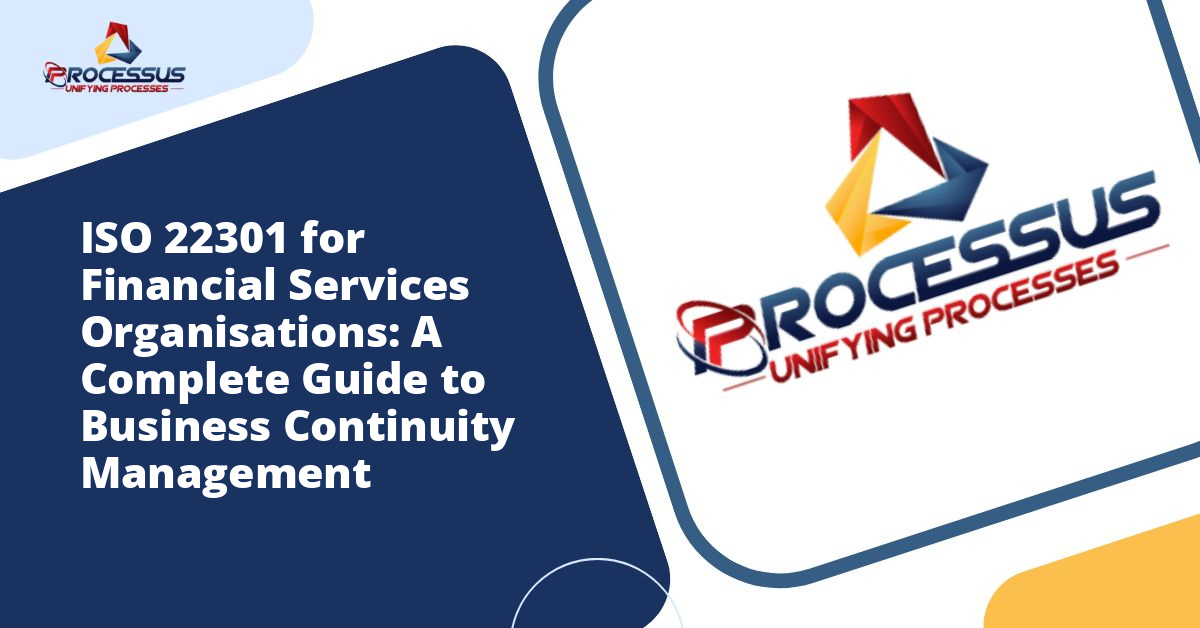In today’s interconnected global economy, supply chains have become increasingly complex and vulnerable to disruptions. From natural disasters and cyber attacks to pandemics and geopolitical tensions, organizations face numerous threats that can severely impact their operations. This is where ISO 22301, the international standard for Business Continuity Management Systems (BCMS), plays a vital role in ensuring supply chain continuity and organizational resilience.
Understanding ISO 22301 and Its Relevance to Supply Chains
ISO 22301 is a globally recognized standard that provides a framework for establishing, implementing, maintaining, and continually improving a business continuity management system. While the standard applies to all aspects of an organization, its principles are particularly crucial for supply chain management, where disruptions can cascade through multiple tiers of suppliers and partners, affecting not only your business but entire industries. You might also enjoy reading about ISO 22301 Business Continuity Plan Development: A Complete Guide for Organizations.
The standard was developed by the International Organization for Standardization (ISO) to help organizations prepare for, respond to, and recover from disruptive incidents. It replaces the earlier British Standard BS 25999-2 and has gained widespread adoption across industries and geographies. Organizations that implement ISO 22301 demonstrate their commitment to operational resilience and their ability to continue delivering products and services even during adverse conditions. You might also enjoy reading about ISO 22301 vs ISO 27031: A Complete Guide to Understanding the Key Differences.
The Growing Importance of Supply Chain Continuity
Recent years have highlighted just how fragile global supply chains can be. The COVID-19 pandemic exposed vulnerabilities in manufacturing, logistics, and distribution networks worldwide. Companies that relied on single-source suppliers or lacked visibility into their extended supply chains found themselves unable to meet customer demands. Similarly, events such as the Suez Canal blockage, semiconductor shortages, and regional conflicts have demonstrated that disruptions can originate from unexpected sources and have far-reaching consequences. You might also enjoy reading about Business Impact Analysis for ISO 22301 Compliance: A Complete Implementation Guide.
Supply chain continuity is no longer merely a risk management consideration but a strategic imperative. Customers, investors, and regulators increasingly expect organizations to demonstrate resilience and the ability to maintain operations under challenging circumstances. ISO 22301 provides the structured approach needed to meet these expectations while safeguarding business interests.
Key Components of ISO 22301 for Supply Chain Management
Leadership and Commitment
Successful implementation of ISO 22301 begins at the top. Senior management must demonstrate commitment to business continuity by allocating resources, establishing policies, and integrating continuity planning into strategic decision-making. For supply chain continuity, this means recognizing that procurement, logistics, and supplier relationships are critical business functions that require dedicated attention and investment.
Leadership must ensure that business continuity objectives align with overall organizational goals and that supply chain resilience is treated as a competitive advantage rather than a compliance burden. This commitment cascades through the organization, creating a culture where continuity planning becomes embedded in daily operations.
Planning and Risk Assessment
The foundation of any effective business continuity program is thorough planning and risk assessment. ISO 22301 requires organizations to identify potential threats, assess their likelihood and impact, and develop strategies to mitigate risks. For supply chains, this involves mapping the entire network of suppliers, logistics providers, warehouses, and distribution channels to understand dependencies and vulnerabilities.
A comprehensive business impact analysis (BIA) helps organizations determine which supply chain functions are most critical and what level of disruption would be unacceptable. This analysis considers factors such as maximum tolerable period of disruption (MTPD), recovery time objectives (RTO), and recovery point objectives (RPO). Understanding these parameters enables organizations to prioritize resources and develop targeted continuity strategies.
Business Continuity Strategies
Once risks are identified and impacts assessed, organizations must develop strategies to ensure continuity. For supply chains, these strategies might include diversifying the supplier base to reduce dependency on single sources, maintaining strategic inventory buffers, establishing alternative logistics routes, and developing relationships with backup suppliers.
ISO 22301 encourages organizations to consider multiple scenarios and develop flexible response plans. This might involve pre-negotiated agreements with alternative suppliers, investments in technology that provide real-time visibility into supply chain operations, or the development of modular product designs that allow for component substitution during shortages.
Documentation and Procedures
The standard requires comprehensive documentation of continuity plans, procedures, and responsibilities. For supply chain management, this includes supplier contact information, alternative sourcing options, logistics contingency plans, and escalation procedures. Documentation must be kept current, accessible, and regularly reviewed to ensure its effectiveness.
Documented procedures should cover various scenarios, from minor disruptions affecting individual suppliers to major events impacting entire regions or industries. Each procedure should clearly define roles, responsibilities, decision-making authority, and communication protocols. This level of detail ensures that when disruptions occur, response teams can act quickly and effectively without ambiguity.
Implementing ISO 22301 in Your Supply Chain
Supplier Assessment and Selection
A resilient supply chain begins with careful supplier selection. ISO 22301 implementation involves evaluating suppliers not only on traditional criteria such as cost, quality, and delivery performance but also on their business continuity capabilities. Organizations should assess whether suppliers have their own continuity plans, redundant production capabilities, and financial stability to weather disruptions.
This assessment process should extend beyond immediate suppliers to include critical second- and third-tier suppliers. Understanding the full supply network helps identify hidden vulnerabilities and concentration risks. Many organizations now include business continuity requirements in supplier contracts, mandating that suppliers maintain certain standards and provide transparency into their own continuity planning.
Building Supply Chain Visibility
You cannot manage what you cannot see. Modern supply chains often span multiple countries and involve numerous intermediaries, making visibility a significant challenge. ISO 22301 implementation drives organizations to invest in systems and processes that provide real-time insight into supply chain operations.
Technology solutions such as supply chain management software, Internet of Things (IoT) sensors, and blockchain-based tracking systems can provide the visibility needed to detect disruptions early and respond proactively. This visibility extends to inventory levels, shipment locations, production status, and supplier performance metrics. When disruptions occur, this information enables rapid decision-making and alternative arrangements.
Developing Alternative Strategies
The principle of redundancy is central to ISO 22301. For supply chains, this means having backup options for critical components, materials, and services. Organizations might maintain relationships with multiple suppliers in different geographic regions, invest in dual sourcing arrangements, or develop the capability to quickly onboard new suppliers when needed.
Alternative strategies also include logistics redundancy, such as multiple transportation modes and routes, relationships with various carriers, and distributed warehouse networks. While redundancy involves additional costs, ISO 22301 helps organizations make informed decisions about which redundancies provide the best balance between cost and risk mitigation.
Training and Awareness
Even the best-designed continuity plans are ineffective if people do not know how to execute them. ISO 22301 requires organizations to provide training and maintain awareness about business continuity principles and procedures. For supply chain teams, this includes training on how to identify disruption indicators, whom to contact during emergencies, and how to activate alternative sourcing or logistics arrangements.
Regular training sessions, tabletop exercises, and simulations help ensure that teams are prepared to respond effectively when real disruptions occur. This training should extend to key suppliers and partners, creating a network of organizations that understand their roles in maintaining continuity across the extended supply chain.
Testing and Exercising Your Continuity Plans
ISO 22301 places significant emphasis on testing and exercising business continuity plans. Plans that look good on paper may reveal weaknesses when tested under realistic conditions. Organizations should conduct regular exercises that simulate various disruption scenarios, from supplier failures and transportation disruptions to cyber attacks and natural disasters.
These exercises can range from simple desktop reviews to full-scale simulations involving multiple departments and external partners. The goal is to identify gaps in plans, test communication protocols, and build muscle memory so that response becomes second nature. After each exercise, organizations should conduct thorough debriefs, document lessons learned, and update plans accordingly.
For supply chains, testing might involve actually switching to alternative suppliers during planned maintenance periods, testing backup logistics routes, or simulating information system failures to ensure that manual processes can maintain operations. These tests provide valuable insights into the practical effectiveness of continuity strategies and build confidence in the organization’s ability to manage real disruptions.
Monitoring, Measurement, and Continuous Improvement
ISO 22301 is built on the Plan-Do-Check-Act cycle, emphasizing continuous improvement. Organizations must establish metrics to monitor the effectiveness of their business continuity management system and identify opportunities for enhancement. For supply chains, relevant metrics might include supplier continuity plan completion rates, time to activate alternative suppliers, supply chain disruption frequency and duration, and recovery time from disruptions.
Regular management reviews should assess these metrics, evaluate the performance of continuity plans during actual incidents, and identify emerging risks that require attention. This ongoing process ensures that the business continuity management system remains relevant and effective as the organization and its operating environment evolve.
Continuous improvement also involves staying informed about best practices, emerging threats, and new technologies that can enhance supply chain resilience. Organizations should participate in industry forums, engage with professional associations, and learn from the experiences of peers and competitors.
Benefits of ISO 22301 Certification for Supply Chain Continuity
While implementing ISO 22301 principles provides value regardless of formal certification, many organizations choose to pursue certification through accredited third-party auditors. Certification demonstrates to customers, partners, and stakeholders that the organization has met internationally recognized standards for business continuity management.
For supply chain purposes, ISO 22301 certification can be a competitive differentiator. Customers increasingly prefer suppliers who can demonstrate resilience and continuity capabilities. Certification may be required to participate in certain supply chains or to win contracts with risk-conscious customers. It also facilitates insurance coverage and may result in more favorable terms from insurers who recognize the reduced risk.
Beyond external benefits, the certification process itself drives organizational improvement. The rigor of preparing for and undergoing certification audits forces organizations to thoroughly evaluate their continuity capabilities, address weaknesses, and establish robust processes. Ongoing surveillance audits ensure that the organization maintains its commitment to business continuity over time.
Challenges in Implementing ISO 22301 for Supply Chains
While the benefits of ISO 22301 are substantial, implementation is not without challenges. Supply chains present unique complexities due to their extended nature and the involvement of multiple independent organizations. Gaining visibility into supplier continuity capabilities can be difficult, particularly for small or overseas suppliers who may lack sophisticated continuity programs.
Resource constraints also pose challenges. Developing comprehensive continuity plans, conducting regular exercises, and maintaining alternative supplier relationships require significant investments of time, money, and personnel. Organizations must balance these investments against other priorities and demonstrate clear return on investment to secure ongoing support.
Cultural resistance can be another obstacle. Business continuity planning requires changing how people think about risk and operations. Procurement teams accustomed to optimizing for cost and efficiency may resist strategies that introduce redundancy and apparent inefficiency. Overcoming this resistance requires strong leadership, clear communication about the value of resilience, and sometimes learning through actual disruption experiences.
The Future of Supply Chain Continuity and ISO 22301
As supply chains continue to evolve and face new challenges, ISO 22301 will remain a critical framework for managing continuity. Emerging trends such as nearshoring, circular economy principles, and digital supply chains will create new opportunities and challenges for business continuity management.
Technology will play an increasingly important role in enabling supply chain continuity. Artificial intelligence and machine learning can help predict disruptions before they occur, analyzing vast amounts of data to identify patterns and early warning signs. Digital twins, virtual replicas of physical supply chains, allow organizations to simulate disruption scenarios and test response strategies without risk to actual operations.
Sustainability and resilience are becoming increasingly intertwined. Organizations are recognizing that environmental and social risks pose significant threats to supply chain continuity. Climate change, resource scarcity, and social instability can all disrupt supply chains, and ISO 22301 implementation increasingly incorporates these longer-term systemic risks alongside traditional operational threats.
Conclusion
Supply chain continuity is essential for organizational survival and success in an increasingly uncertain world. ISO 22301 provides a comprehensive, proven framework for building resilience and ensuring that supply chains can withstand and recover from disruptions. By implementing this standard, organizations protect their operations, maintain customer trust, and create competitive advantages.
The journey to ISO 22301 compliance and certification requires commitment, resources, and cultural change, but the benefits far outweigh the costs. Organizations with mature business continuity management systems are better positioned to navigate disruptions, capitalize on opportunities when competitors falter, and build lasting relationships with customers and partners who value reliability.
As you consider your organization’s approach to supply chain continuity, ISO 22301 offers a roadmap for developing the capabilities needed to thrive in good times and bad. Whether you pursue formal certification or simply adopt the standard’s principles, investing in business continuity management is investing in your organization’s future. The question is not whether your supply chain will face disruptions, but whether you will be prepared when they occur.







